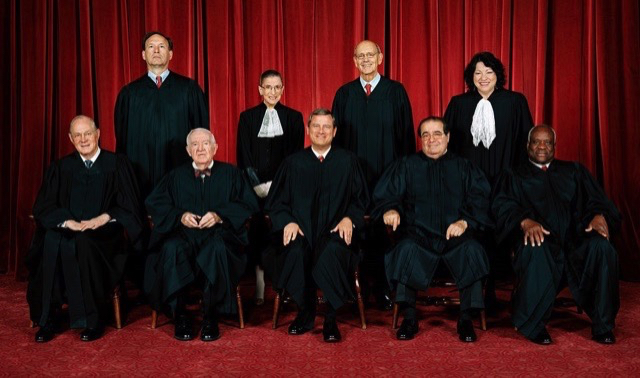(Reuters) – When Connecticut State Treasurer Denise Nappier announced Wednesday that the state retirement fund, as the lead plaintiff in a securities class action against the biotech company Amgen, had settled the case for $95 million, I was startled to realize the litigation was still going on.
It’s been a while, after all. Investors first sued Amgen all the way back in 2007 for (among other things) supposedly misrepresenting clinical trial results for two flagship anti-anemia drugs. U.S. District Judge Philip Gutierrez of Los Angeles certified a class of investors in 2009, and the 9th U.S. Circuit Court of Appeals affirmed the certification in 2011. Amgen then tried its luck at the U.S. Supreme Court. The company lost unequivocally in 2013, when the justices held that shareholders can be certified as a class without showing the materiality of the alleged misstatements they are suing over.
Almost every securities class action ends with an early dismissal or a settlement. If shareholders’ claims survive a defense motion to dismiss, cases settle, on average, after about 16 months after the dismissal ruling, according to a 2014 study by law professors at Stanford. Obviously, Amgen’s detour at the Supreme Court slowed the timetable, but the case went on for more than three years after the justices ruled against the company and sent the class action back to the lower courts. When Amgen and the Connecticut retirement fund leading the plaintiffs’ case finally began serious settlement negotiations, they had already filed summary judgment motions and were a month away from a trial date. That is extremely rare for a securities class action.
The Amgen case, as you know, isn’t the only shareholder class action to receive a hearing at the Supreme Court in the past several years. I checked out dockets in the two others recently decided by the justices – class actions against Halliburton and Omnicare – to see whether those cases, like Amgen, have taken longer than average to be resolved.
They have indeed. The Halliburton case, which was originally filed in 2002 and made not one but two trips to the Supreme Court, is back at the 5th Circuit for yet another appeal of a class certification decision by the trial judge, U.S. District Judge Barbara Lynn of Dallas. As you surely recall, the Supreme Court returned the case to the lower courts in 2014, after the justices tantalized but ultimately disappointed defendants hoping to knock out the “fraud-on-the-market” theory of reliance that underpins all securities class actions. Halliburton, which is accused of understating its asbestos exposure, took advantage of the Supreme Court’s reminder that defendants can still block class certification by rebutting the presumption that investors relied on misstatements.
In July 2015, Judge Lynn certified a class, but knocked out claims based on some alleged Halliburton misstatements. Both sides’ lawyers – Baker Botts for Halliburton and Boies Schiller & Flexner for the plaintiffs – have appealed to the 5th Circuit, which will hear arguments in this all-too-familiar litigation next month. Last November, Judge Lynn denied Halliburton’s motion to stay the class action until the 5th Circuit rules on class certification, so discovery is underway. But unless the appeals court finds no investor class can be certified, I’ll probably still be writing about the Halliburton case next summer.
It’s only been about 16 months since the Supreme Court issued its most recent securities class action decision, 2015’s Omnicare v. Laborers District Council Construction Industry Pension Fund, which addressed whether investors can sue over misleading statements of opinion. (The court’s conclusion: yes, but it won’t be easy.) The Supreme Court case addressed Omnicare’s dismissal motion, so, technically, the clock hasn’t started ticking on the Stanford’s study 16-month average for settlement after dismissal rulings. U.S. District Judge William Bertelsman of Covington, Kentucky, will hear arguments on Omnicare’s motion to dismiss shareholders’ third amended complaint next month. By then, the class action will be nearly 11 years old.
So: securities class actions that have gone to the Supreme Court seem to be unusually contentious and difficult to settle. Which side is responsible? Thomas Dubbs of Labaton Sucharow, who was lead counsel for the Connecticut fund that settled Wednesday with Amgen, told me his side’s resolve deepened after its big win at the Supreme Court. But delay typically benefits deep-pocketed defendants and lawyers working at hourly rates more than shareholders and their contingency-fee counsel.
Connecticut had to litigate all the way to the eve of trial to get its $95 million from Amgen, after a decisive Supreme Court win on class certification. The Supreme Court’s Halliburton and Omnicare rulings were much more ambiguous. With determined defendants, they could go on for years.
Halliburton defense lawyer Aaron Streett of Baker Botts declined to comment, as did Omnicare counsel Harvey Kurzweil of Winston & Strawn. Amgen counsel John Hueston of Hueston Hennigan didn’t respond to my email. Nor Carl Goldfarb of Boies Schiller, who represents Halliburton investors, or Henry Rosen of Robbins Geller Rudman & Dowd, counsel to Omnicare shareholders.
(Note: A previous version of this article stated that the Connecticut attorney general announced the Amgen settlement. It was actually the state treasurer.)
For more of my posts, please go to WestlawNext Practitioner Insights
Source: blogs.reuters.com





Be the first to comment on "Why Do Securities Class Actions Drag on Once SCOTUS Gets Involved?"